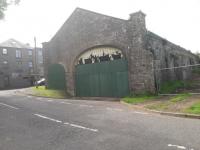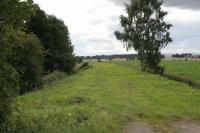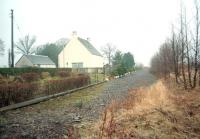Newtyle and Coupar Angus Railway
Introduction
This early railway is closed. The company provided a service between Coupar Angus and Newtyle [1st]. It was a 4 ft 6.5 in line, 5 1/3 miles long.
It became part of the Scottish Midland Junction Railway and the line upgraded and re-gauged. With this it became an important part of the West Coast railways route from London to Aberdeen.
Dates
Portions of line and locations
This line is divided into a number of portions.
Newtyle to Coupar Angus
This was the northern terminus of the Dundee and Newtyle Railway. The terminus building still stands. It is one of the oldest stations in Britain and probably the oldest trainshed in existence.
...
See also
Dundee and Newtyle Railway
Newtyle and Glammiss Railway
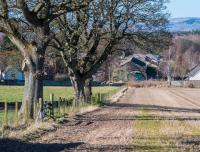
Ewan Crawford 03/03/2023
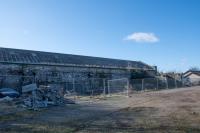
Ewan Crawford 03/03/2023
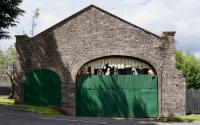
Colin Martin 24/06/2017
This junction was north of Newtyle. It was where the northern end of an 1868 deviation through Newtyle [2nd] to avoid the 1831 Hatton Incline met the earlier alignments. Between 1868 and 1881 it was where the western arm, a slightly realigned curve to Ardler Junction for Coupar Angus and Blairgowrie, separated from the eastern arm, a wholly new line to Alyth Junction for ...
More detailsSee also
Dundee and Newtyle Deviations (Dundee and Perth Railway)
Newtyle and Glammiss Railway
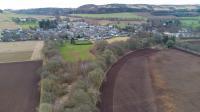
Ewan Crawford 03/03/2023
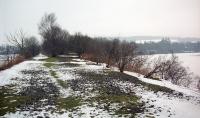
Ewan Crawford //1996
This junction was north of Newtyle [1st]. South from the junction the line was joint Newtyle and Glammis Railway and Newtyle and Coupar Angus Railway, the owners of the routes east and west respectively from the junction.
...
See also
Newtyle and Glammiss Railway
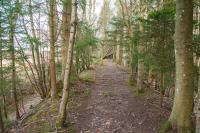
Ewan Crawford 03/03/2023

Ewan Crawford //1996
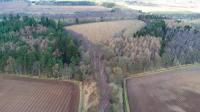
Ewan Crawford 03/03/2023
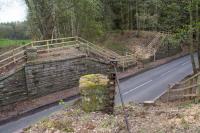
Ewan Crawford 02/05/2023
This was the junction between the Strathmore mainline Perth - Forfar [2nd] - Kinnaber Junction and the curve from the Dundee and Newtyle Railway. This allowed through running from Dundee West to Coupar Angus and Blairgowrie.
...
See also
Scottish Midland Junction Railway
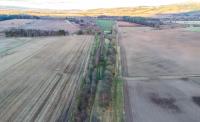
Ewan Crawford 08/03/2023

G H Robin collection by courtesy of the Mitchell Library, Glasgow 15/08/1953
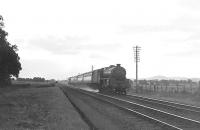
G H Robin collection by courtesy of the Mitchell Library, Glasgow 19/07/1953

G H Robin collection by courtesy of the Mitchell Library, Glasgow 15/08/1953
This station was located in Washington, just east of Ardler station and west of Ardler Junction. It was built to serve the planned new railway village which was feud by George Kinloch (senior).
...
This level crossing, Ardler West Gates, was immediately north of West Ardler.
...
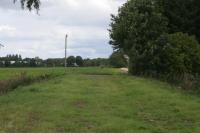
Gary Straiton //
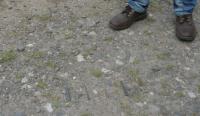
Gary Straiton 12/08/2017
This was a two platform station. There was a level crossing to the east of the station and a goods yard to the west, on the north side of the line and reached by reversal from the northbound (down) line. The station buildings were of Caledonian Railway style typical of the line.
...
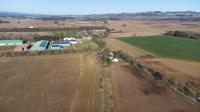
Ewan Crawford 27/03/2023
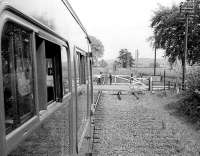
Bill Roberton 25/05/1974

David Gellatly Collection 04/09/1920
This was a three platform station. With an island platform on the west side - the outer face being for the Blairgowrie branch and down platform (with canopied building) and up platform (timber building) on the east side (a building which had a single sloping roof was replaced with another slightly further east around the Great War). Both sides of the station had goods loops. Access to the ...
More detailsSee also
Scottish Midland Junction Railway
Blairgowrie Branch (Scottish Midland Junction Railway)
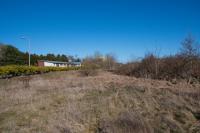
Ewan Crawford 27/03/2023

Ewan Crawford //1996
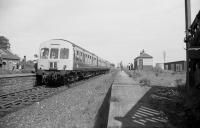
Bill Roberton 25/05/1974

Bill Roberton 25/05/1974










